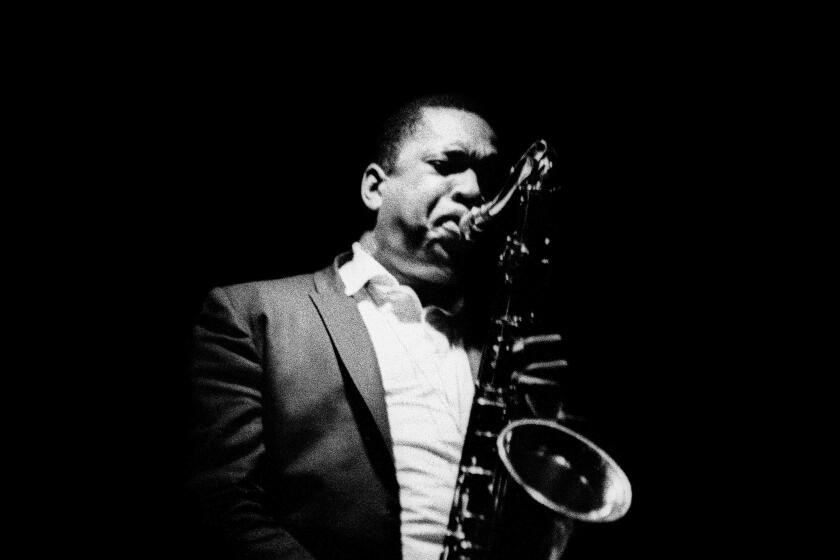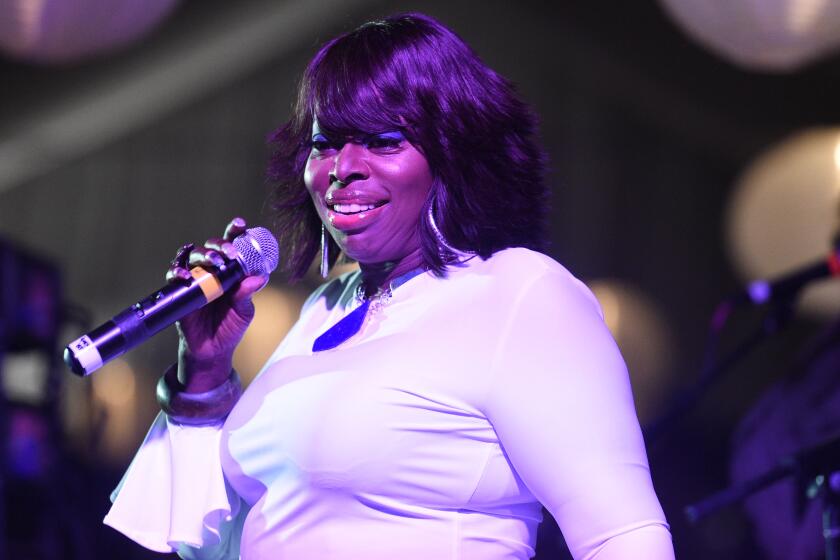K.T. Oslin’s a late Bloomer
- Share via
There are not only good country songs on K.T. Oslin’s albums. But there’s also a good song in her life story.
“The Ballad of the Late Bloomer” would be a natural title--an upbeat tune about a middle-aged New York woman who managed to break into country music and become a star.
You could play up the pathos--the fact people thought she was too old and that her RCA album last year was her last chance to make good. Some tear-jerking, pedal-steel guitar lines would heighten the drama. The only problem is: You might have trouble finding people who would believe the story.
Even Kay Toinette Oslin finds it hard to believe sometimes.
“What am I doing here in this fancy restaurant eating soft-shell crab and talking about my life to the media?” Oslin asked, during a recent interview.
“People my age (46) aren’t starting careers in show business. At this age, they’re winding up careers and looking for the nearest rocking chair to retire into. What’s happening to me doesn’t make a bit of sense.”
The remarks weren’t all that funny, but Oslin cracked up anyway. That’s her style. At several points during the afternoon interview, she uncorked one of those long, loud, hearty laughs, telegraphing that she’s a good-natured, fun-loving woman who doesn’t take herself too seriously, one who laughs just for the fun of it.
But her career is no laughing matter.
A phenomenon is the best way to describe it. Though she’s only recorded two albums--last year’s “80’s Ladies” and her current “This Woman,” she’s one of country’s newest and brightest stars.
While she’s had more experience singing Broadway musicals than country music, there’s no trace of that stately, polished, theatrical style in her vocals.
“I sing from the heart,” Oslin explained. “It’s emotion that counts now. My throat never felt comfortable with that Broadway singing. It always felt phony to me. I used to have a wide range and I could hit those high notes. Now I didn’t have the range I used to, but my voice has more character and feeling.”
Calling her a country singer, however, is like calling Madonna an R & B singer. The dark-haired singer has carved a career in country music by singing and writing material that is only loosely related to what most people describe as country. She is one of several contemporary artists who are expanding country’s limits--artists like k.d. Lang, Lyle Lovett and Steve Earle.
“You can call what I do country because of the simplicity and the story songs and some of the country instrumentation,” she explained. “To me, my music is some blend of pop and Southern-blues-and-rock and a little bit of country. There’s some R & B in there too. It’s a mishmash of stuff. I’m surprised people like it. They should be asking: What is this stuff?’ I ask that myself all the time.”
She let loose with another lengthy laugh.
Oslin’s audience includes middle-aged women, who relate to songs like “80’s Ladies,” “This Woman” and “Round the Clock Lovin’ “--penetrating, vivid tales of women in turmoil. A lot of Oslin’s fans no doubt think the material is largely autobiographical.
“Not really,” Oslin said. “But I do write from a personal point of view. I see what my friends are going through . . . how they react to relationships. I learn from watching people and try to put it in terms that music fans would find interesting.”
An underlying theme of some of the songs on her “This Woman” album appears to be loneliness.
“Maybe,” said the songwriter who indicated she wishes she had more time to spend with her Nashville-based beau. “I go in and out of loneliness myself. America is becoming a haven for lonely people. There’s a lot of people alone out there. I’m not the only one who feels that. I’m certainly not the only one who writes about it.”
Laughing again, she added: “Maybe I’m a spokeswoman for all the lonely, unhappy women. I hope not. I don’t want to be a symbol of depression. I’d rather be a symbol of fun.”
Oslin collapsed in a fit of laughter after making this admission: “I was never that wild about country music. I used to hate it. I didn’t want to listen to that stuff, let alone sing it.” In fact, she’s still not wild about it.
“I don’t listen to any kind of pop music,” she added. “I don’t even listen to the radio much. I’d rather spend my time doing other things.”
A drama student during her junior college years in Texas, the Arkansas native focused on musical comedy and became somewhat of a local star in Houston in the mid-’60s.
After a year in the “Hello, Dolly!” touring company as a chorus singer and understudy, she moved to New York in 1967 to work in the Broadway production. She’s lived there ever since--mostly on Manhattan’s Upper West Side--though now, she also has a home in Nashville.
“When you get into big-time theater, the business part of it is very ugly,” she said. “That Broadway singing didn’t suit me anyway. So I left the theater scene in a huff.”
With the number of big Broadway-style musicals on the decline at the time, Oslin spent the ‘70s as a marginal jingle singer and an actress in commercials. “Some people make a fortune in that business, but I wasn’t one of them,” she said. “I was one of the fringe folks.”
The turn to country music was largely accidental.
As near as she can figure, she got inspired to write country music in 1978 when she read a bit of graffiti on the wall of a South Carolina cafe--”I ain’t never gonna love nobody but Cornell Crawford.”
“I was writing songs--country songs for some weird reason--even though I didn’t want to be a songwriter,” she insisted. “I thought I had as much chance of becoming a songwriter as I did of becoming a shepherd in Manhattan. Me, a songwriter? What a laugh.”
Oslin polished her composing skills and got a singles deal on Elektra Records in the early ‘80s. But the country singles flopped, and she lost her record contract. Oslin was devastated, describing 1983 as her “year of pain.”
Rallying her courage for a final try at Nashville, Oslin borrowed money in January of 1986 to stage a showcase in the country music center. RCA’s Joe Galante, who also signed the Judds, attended the showcase and later signed Oslin.
Recalling that showcase, Oslin said, starting with a chuckle that mushroomed into roaring laughter: “I can’t believe I went after a record contract that way. I’m such a coward. Organizing something like that is so unlike me. But my back was against the wall. It was blooming late or nothing. Ol’ K.T. got lucky and bloomed late.”
More to Read
The biggest entertainment stories
Get our big stories about Hollywood, film, television, music, arts, culture and more right in your inbox as soon as they publish.
You may occasionally receive promotional content from the Los Angeles Times.










